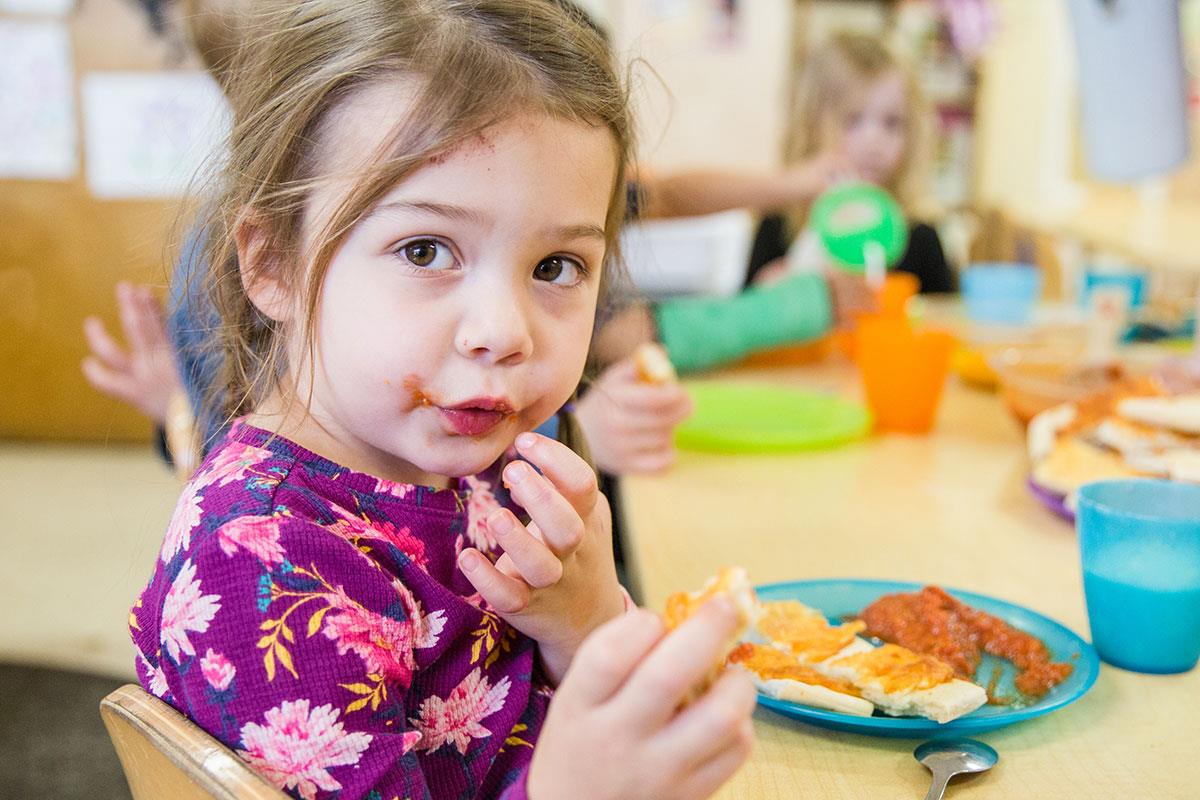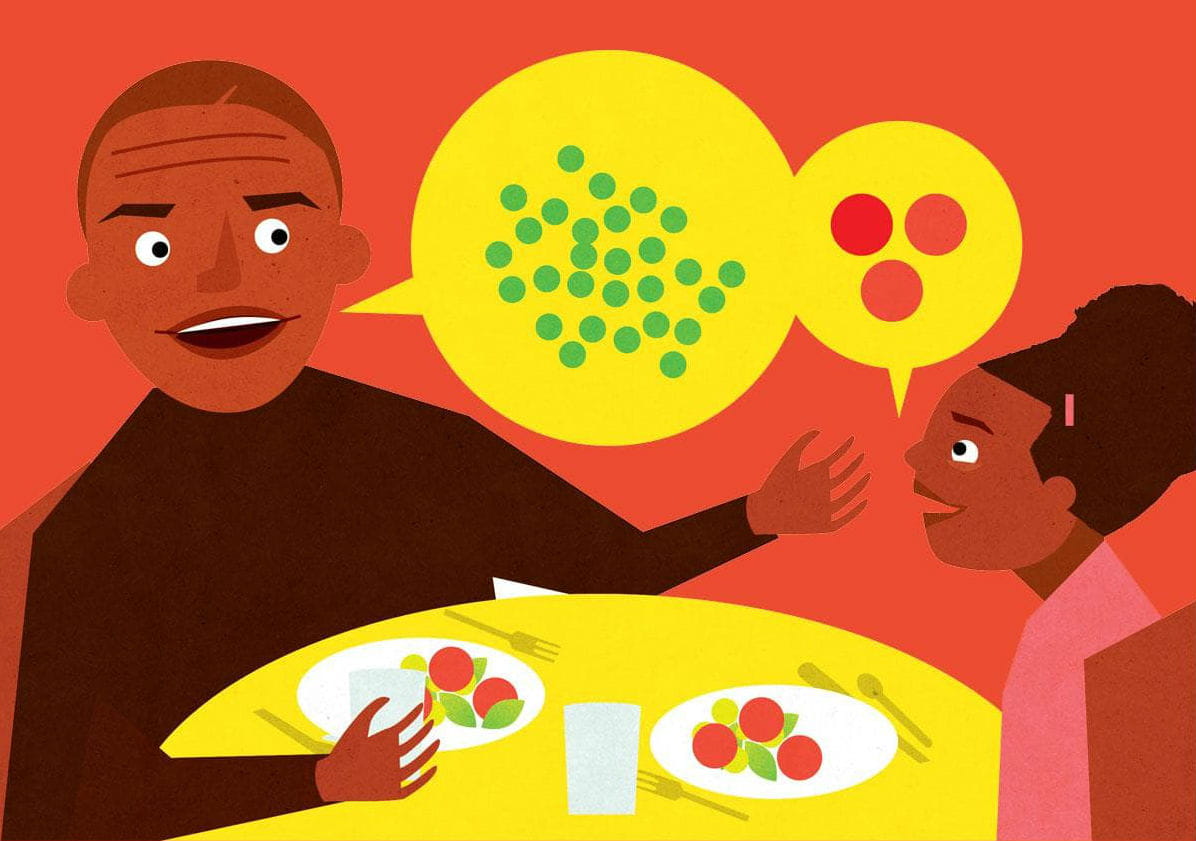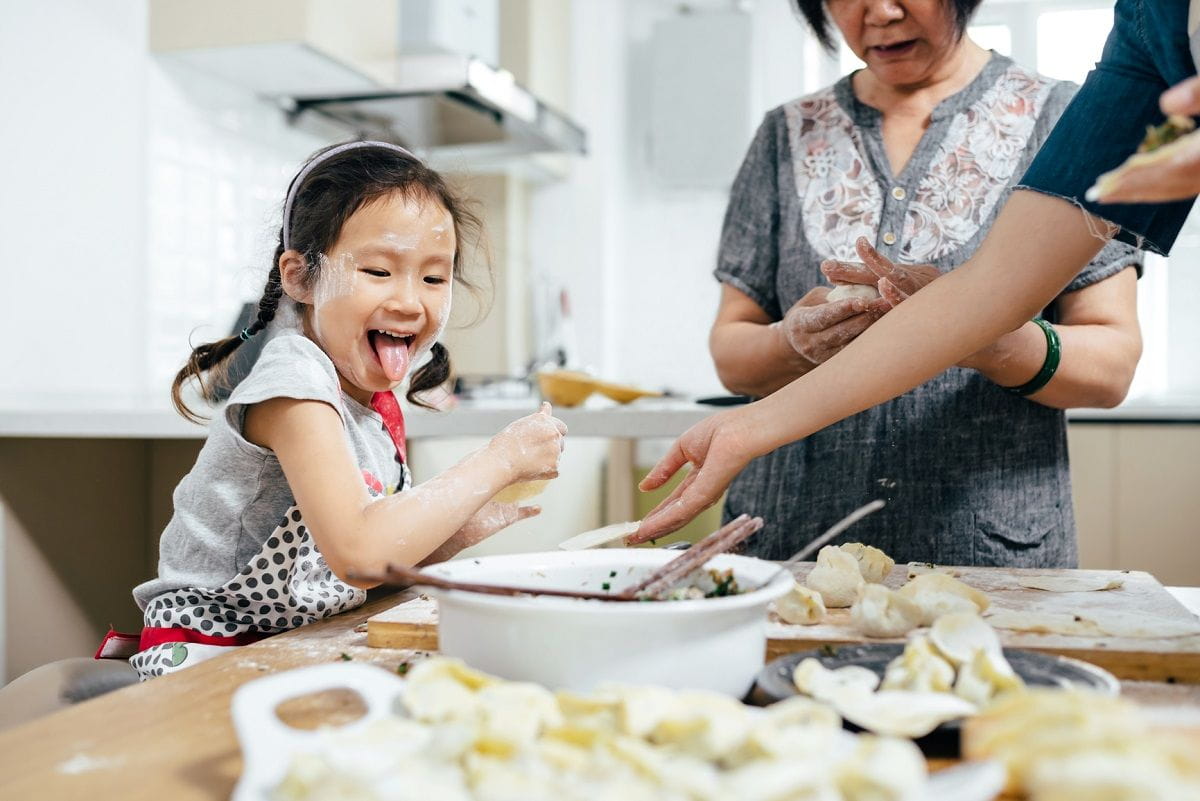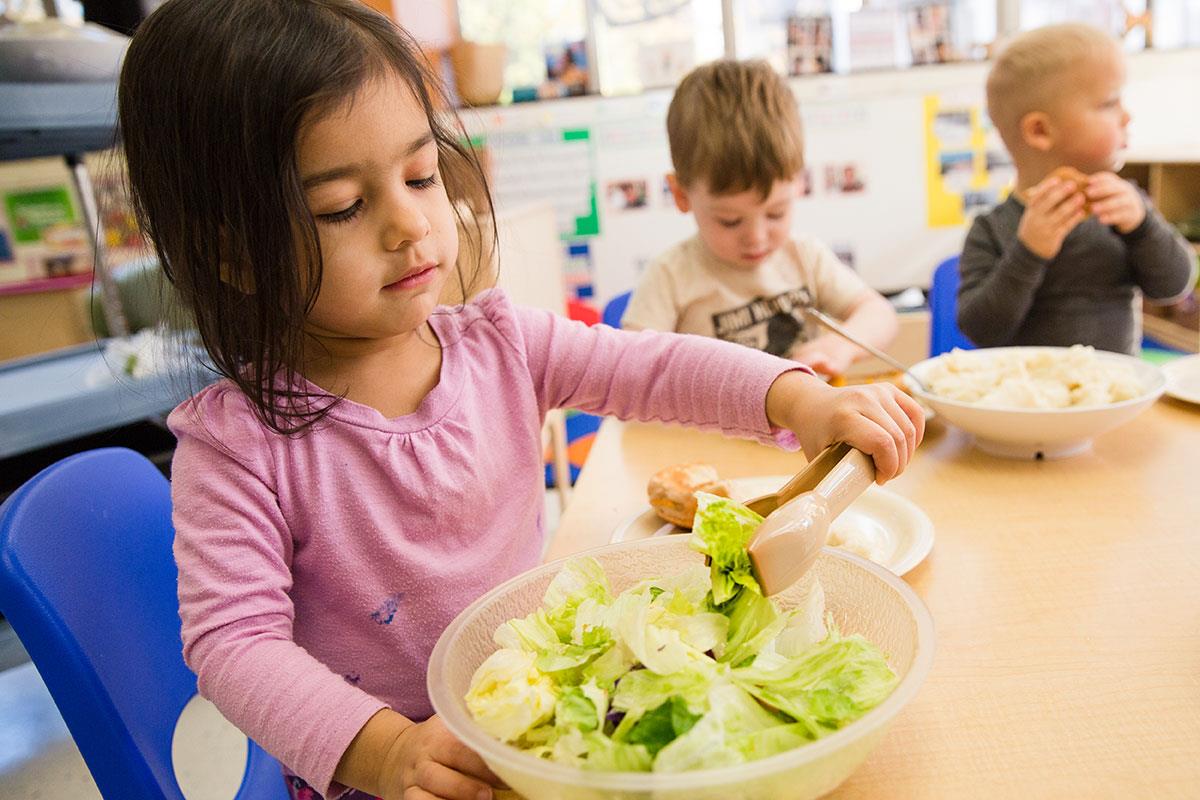Meals with Class: "Family-Style Dining" Brings Learning to the Kids' Table

By Carolyn Sweeney Hauck
It’s lunchtime in Yolanda Menguita’s preschool class, and the four- and five-year-olds are buzzing around her. With her short black hair and petite frame, Menguita’s warm but commanding presence helps them settle down at the kid-size table in no time.
When the kids have filled their plates, Menguita sits down with the children in her own kid-size chair and begins eating the same meal. “What have we got today?”
Small voices name the milk, carrots and peas, pear slices, and (class favorite!) ravioli. Menguita points to some ravioli. “What food group is this one?” She’s stumped them.
“Fruit!” exclaims Logan. “Not quite,” Menguita says, then begins to make the “g” sound before letting the class know it’s a grain—but they still want to make guesses: “Vegetable!” yells Allison. “Chicken! Is that a fruit?”

When adults and children eat together, kids have the chance to see good eating habits in action while being at the same level with the teachers—literally. That’s important. When children eat together along with adults, they learn that meals are about connection, friendship, and conversation, not just wolfing down some food and going back to the day.
“Family-style dining,” as this model of eating is called, also provides teachers and children an important opportunity to talk about nutrition (such as who likes what and why each food is good for our health), to discuss why it’s important to try new foods, and to simply bond with each other.
“It’s probably my favorite part of the day,” says Menguita, “I get to hear about their families and their lives outside of school—I really get to know my kids. Mealtime is so special that way. I also have a rule that they have to try something at least once, even if it's just one bite. And usually, they like what they weren’t sure about trying.”

Just Like a Family
On a different summer day across town at a KinderCare in Portland, Oregon, a similar scene is taking place as teacher Jodi Oliver eats with a small group of four- and five-year-olds. Today, the food in high demand is...broccoli.
“Broccoli!” shouts a bouncy four-year-old named Meghan when the bowl is passed to her. “Broccoli makes you strong,” adds Diego.
A voice is heard across the table: “Meghan, you took all the broccoli!” Oliver gently models polite language to the broccoli-seeking child by saying, “May I please have more broccoli?”
As the broccoli commotion settles, the seven children sitting with Oliver quiet down. She’s telling them a favorite true story of hers: the one about her cat who chased her pet spider into the bathroom. They look a lot like a family at home sitting at the table together, eating a balanced meal and sharing stories. And that’s exactly the point.

A Guide to Bonding at the Dinner Table
While it’s unlikely you need family mealtime chit-chat tips (especially if you have a chatterbox on your hands), the evening meal is still a great time to practice being present with each other. After all, in our modern world of iPhones and iPads, life is chock full of distractions—like really full—and unplugging from the gadgets for dinner is the perfect way to focus on what’s really important. Family mealtime need not be an everyday occurrence—life is busy—but when you can make it happen, make the most of it!
1. Bond by telling stories of the day.
Sometimes it can be hard to get kids talking about their day! Instead of asking a general question (like “How was your day?”), try asking him about his favorite part of the day and least favorite part of the day—it helps him focus on a few moments in time rather than all of them. If you’re lucky, you’ll get some good details about the friend he played with on the playground, the grasshopper he found and examined, or how he dressed up as a firefighter and saved the day.
2. Talk about the food on your plate.
Don’t take for granted that your kid knows everything about cauliflower (even if you’ve served it a million times). Ask her what it tastes like, talk about the texture and color, and if you happen to know the health benefits of that particular food, quiz her on why it’s good for her. She just might surprise you with the right answer!
3. Model great manners.
Standard-issue manners usually includes kids saying “please” at the end of an “I-need-something” question or sitting while they eat. (You know, as opposed to dancing around the table doing the Hokey Pokey.) Those are great for starters, but you can take it further. Add these to your polite-behavior bag: passing the salt and pepper, clearing their own plates from the table, enjoying conversation together, and last but not least, putting all phones away while you eat, chat, and share time together.




